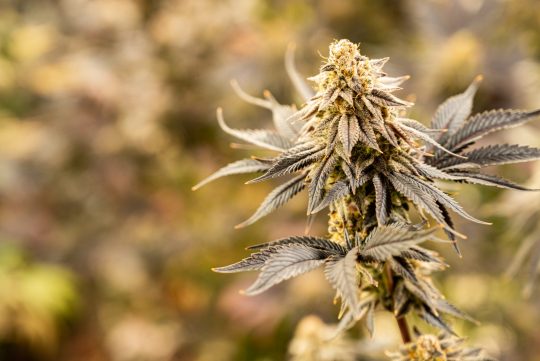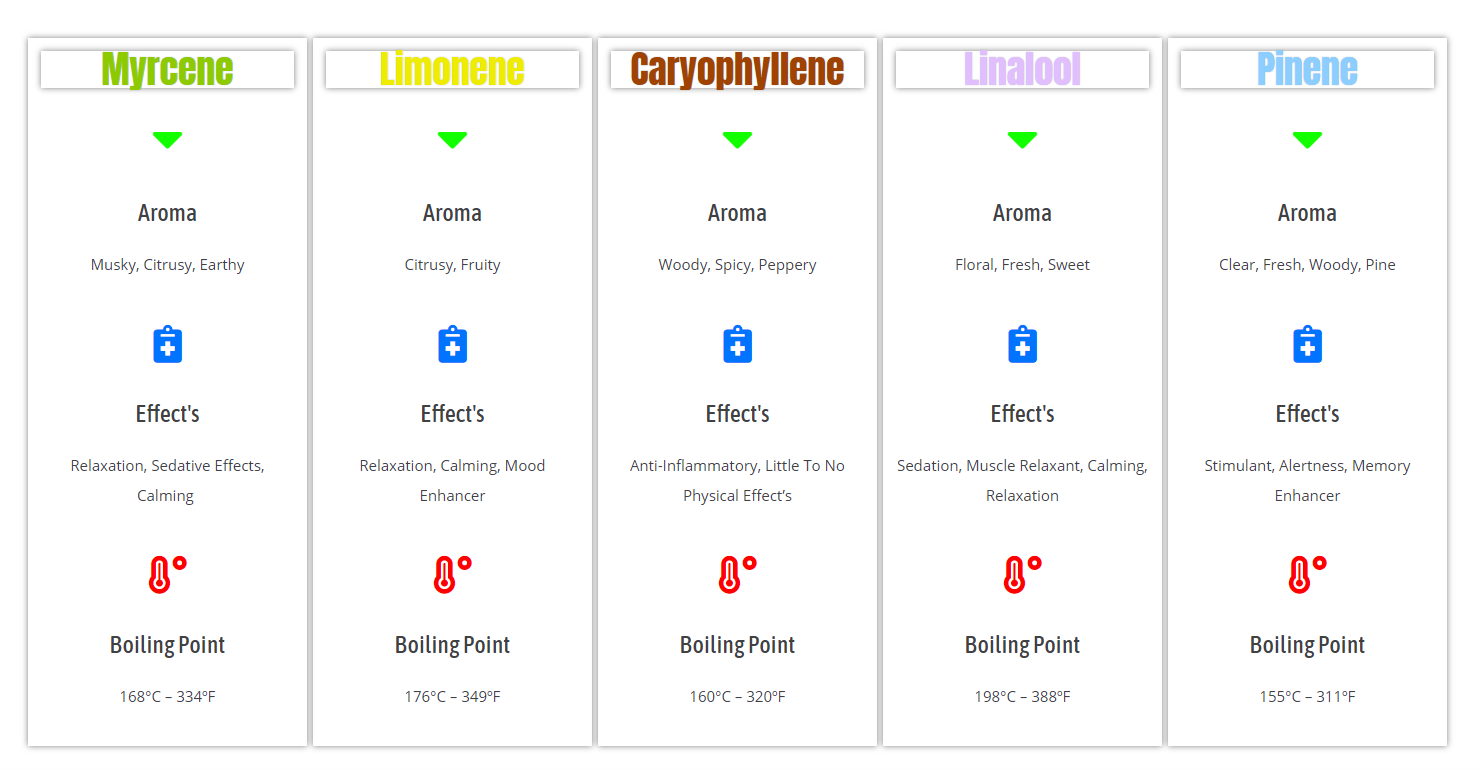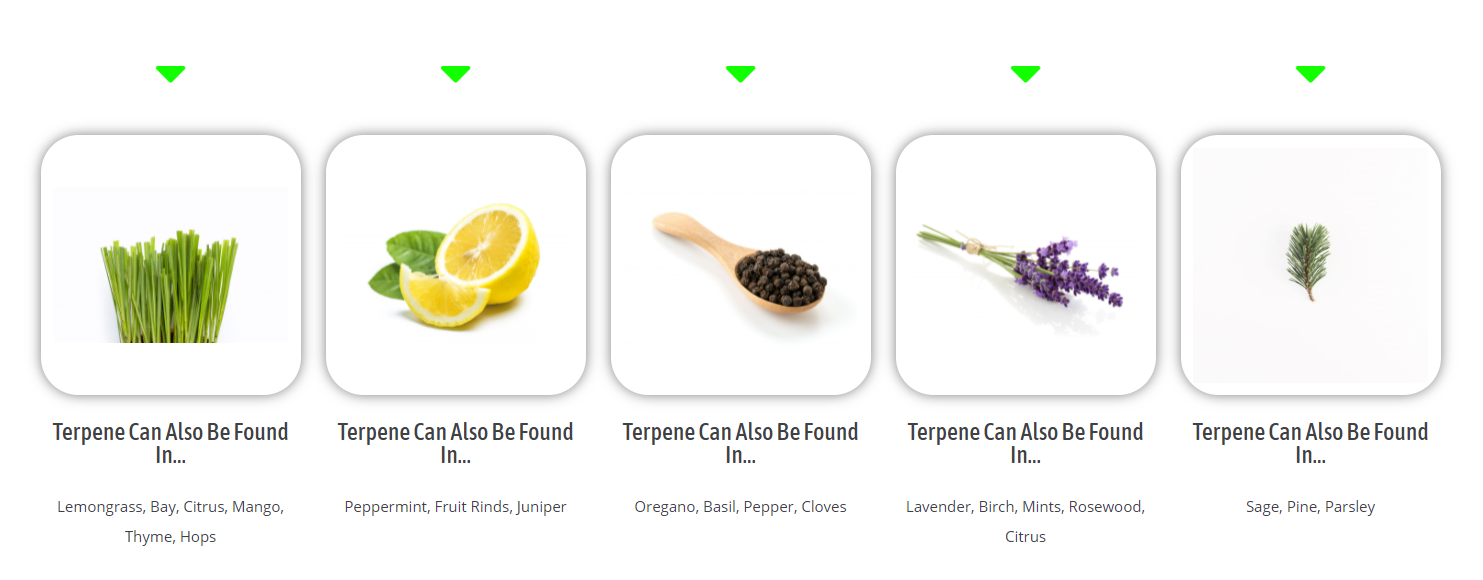What are Cannabis Terpenes and How Are They Produced?
One of nature’s most fascinating compounds, terpenes are found in a variety of plant sources. They can also be found in egg yolks and feathers from animals such as fish or birds.
It’s amazing how the terpenes give plants their unique smell, color and taste.
Terpenes are truly multifunctional and also serve as a form of protection for the plant against predators, actively promote disease resistance within the plant, can help attract insects that will pollinate the plant, and most startlingly of all potentially play a role in plant to plant communication.
Various other functions of terpenoids include plant elongation, cell growth modulation, photoprotection, and light harvestation so as you can see, selecting and utilizing the correct terpenes will have an incredibly profound effect on not just the flavor and taste of a specific cannabis strain but also on the growth, resilience and overall health of the plant as well.

For the average user though, the in-depth science behind how the terpenes work and how they help with the cannabis plant’s growth will be less noticeable (and interesting) than the more obvious effect on how the variety of cannabis terpenes produce different effects on the body.
Terpenes are similar to THC and CBD but have their own therapeutic attributes such as analgesic properties which can be used for pain relief or anti-inflammatory properties good for reducing inflammation in joints.
Cannabis Terpenes
Terpenes give cannabis its distinct look, taste, and aroma. The primary terpenes are the major influence on how it looks: for example lemon-scented buds with a lime green color or earthy clay brown flowers that smell like pine trees.
Secondary terpene substances add depth to these features by adding layers of flavor; such as peppermint smells mixed in with strawberries and other sweet fragrances!
The two main categories of cannabis are classified as Indica and Sativa. The plants can often be distinguished by their different tastes, aromas, highs (mood effects), and physical reliefs/effects such as pain reduction or relaxation for instance.
There are so many different types of terpenes that can be found in cannabis, and the type of terpene is what determines if it’s an Indica or Sativa strain. The way these substances interact with our body affects how we feel – from easing anxiety for some and elevating moods for others.
Well-Known Primary Terpenes
- Pinene Terpene – is derived from the resin in pine trees and it can be found across a variety of plants. Pinene has therapeutic properties that include anti-inflammatory, bronchodilator, and anti-bacterial.
- Humulene Terpene – Humulene is a woody compound with appetite suppressing and inflammatory properties that can be found in marijuana strains such as Gelato or Sour Diesel.
- Limonene Terpene – Limonene is a powerful and uplifting terpene that also serves as an appetite suppressant. It helps to reduce anxiety, depression, and nausea in many cases. Limonene’s joyous aroma not only lifts the mood but can be used for aromatherapy purposes by helping you relax and is often found in strains such as Wedding Cake Strain.
- Myrcene Terpene – Often found in marijuana, Myrcene terpenes increase the number of cannabinoid substances in the brain. Some strains with this particular terpene include OG Kush, Grape Ape, and Girl Scout Cookies.
- Caryophyllene Terpene – With high levels of terpene caryophyllene, cannabis strains deliver a spicy warmth that can be found in many herbs and spices such as cinnamon, cloves, black pepper, basil, oregano as well as many other herbs. Caryophyllene terpene also binds especially well to CB2 receptors throughout your body’s endocannabinoid system which means it could be used for an array of medical purposes including inflammation relief and pain management.
Primary Cannabis Terpene Chart
Summary
The chemical composition of cannabis is surprisingly diverse, with a variety of terpenes contributing to the unique experience.
Your own unique and specific needs will determine what particular terpenes will be most beneficial for you and will therefore inform what specific type of cannabis would be best to purchase.
When you visit your favorite dispensary, it can be overwhelming to navigate the world of terpenes. You won’t need to know them all, but keep these few we’ve shared today in mind so that when a budtender asks what effects and flavor profile you’re looking for, you’ll have some suggestions ready!
Share the Love
If you found this post useful, please let others know about it by sharing it.



